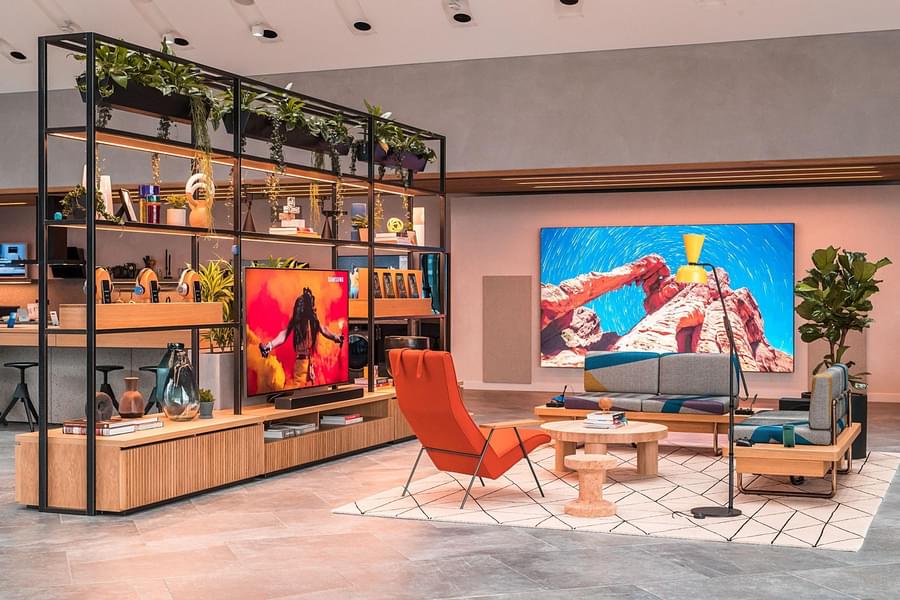Rebalancing the consumer electronics experience
With heightened reliance on technology during lockdown, we've been thinking of ways for brands in this space to better connect with their customers.


With heightened reliance on technology during lockdown, we've been thinking of ways for brands in this space to better connect with their customers.


During lockdown, we’ve discovered a whole new appreciation for brands that have made life that little bit easier. We now have a greater reliance on brands that can support our everyday lives, work and wellbeing - and a large number of those are providing us with technology products and services to help us adapt to a new way of living.
While the past few months have been testing for most other sectors, electronics brands have seemed to prosper. We’ve seen a boom in online shopping, with web traffic for consumer electronics retail now over double what it was pre-pandemic. The start of lockdown in the UK saw laptops and PlayStations sell out online and the Dyson dehumidifier become the most coveted item on tech-savvy shopping lists. COVID consumers are looking for products that can distract, entertain and make life and work more convenient.
Despite this increased reliance and demand, however, the sector still has its challenges, exacerbated by the fact that in the coming months, consumers will grow more discerning with their spending and the brands they bring into their homes. This got us thinking about some solutions to these issues and what brands should be doing in order to reframe the customer experience and maximise success during and post-COVID.

As consumers, we interact with brands everyday - but which ones are we truly engaged with? It sometimes feels like we have ‘invisible’ brands in our own homes or hands - we know they’re there, but they’re not making a meaningful enough brand impact. When buying a new washing machine, the overall customer experience - including the process of choosing and buying - is mostly owned by online platforms such as Amazon and AO, or retailers such as Curry's and Best Buy et al. For the product brand, engagement is often reduced to packaging, a guarantee card or helpline if something goes wrong. How can brands rebalance the relationship and engage directly with consumers in more ways?
We think it’s about creating a total brand experience. If you think you're in danger of being an invisible brand, you should seek to connect in different ways by considering what your purpose is and what your values are - consumers need something to align with in order to form stronger ties. An experience-led approach, taking into account a brand’s unique personality, the way it distributes its product through its places or processes and the way it connects with its people will draw invisible brands into the light.
The purchase of technology products is most often seen and framed in rational terms, driven by tech specs and numerous features which can sometimes be an overcomplicated turn-off for consumers. Information overload from warranties to star ratings is common - could there be too much reliance on undifferentiated products and not enough on the tangible whole-life benefits?
We think brands should reframe technology products with emphasis on the lifestyle potential. It’s about what the customer can learn or accomplish with the product and how it can fit into their wider world - Samsung KX is a great example of a tech brand doing this very well, with their experiential brand home in Coal Drops Yard and more recently with the launch of their online content hub as a response to COVID. Brands should inspire and excite audiences by focussing less on specs and more on bringing lifestyle benefits into the commercial narrative.

Now more than ever, tech is key in supporting our lifestyle and economy - but although online traffic and sales of essentials and entertainment devices are up, discretionary purchases are down as uncertain consumers grow increasingly discerning with their spending habits. Historic issues with obsolescence have led customers to be suspicious of some tech products, and now more than ever ecological factors such as the ability to maintain, repair or reuse are becoming more prominent amongst a more eco-friendly society.
Brands should react to this by being open, transparent and proving their reliability, drawing associations with added rather than poor value. The development of products with a certain level of intelligence will allow for a better connected and more reactive ecosystem for customers to benefit from, with smarter technology doubling up to fulfill a range of different needs.
But those who prove they are there for their customers beyond the initial point of purchase will be the real winners. Brands could think about new content channels and more ways to engage and help customers get the most out of their tech, perhaps by offering workshops or tutorials to educate their audiences on the full functionality of smart products and inspire future use and purchases.
As well as on-going guidance, installation and repairs should also be a part of the most engaging brand experience. Home-visit retail operator Enjoy is doing this particularly well, with their mobile service providing exceptional customer service on that all-important last mile of delivery & installation. Sharing knowledge, adding value, and lengthening product life will all help to build customer trust and loyalty, ensuring long-term brand prosperity.

The level of opportunity across this category is huge right now. We believe that by rebalancing the customer experience and engaging directly with consumers, brands will be able to create new, meaningful brand experiences that will ensure lasting success during and post-pandemic.
For more information on how we can help you reframe your brand experience, please get in touch.
Illustration by Jack Dalziel

The first ever SXSW London took over Shoreditch this month, offering a wealth of inspiration and insights across tech, business and culture. We share our thinking into how it can return even bigger and better for 2026.

